Ad spending will hit the bar of $725 billion by 2026, highlighting its significance in digital marketing. This explosive growth reflects how automated, data-driven media buying has become the backbone of modern ad strategies. But what does a successful campaign of that kind look like, and which programmatic ads examples are really bound to work? Let’s take a deep look.
Key Takeaways:
- Programmatic advertising is set to reach $725 billion by 2026, enabling brands to make data-driven decisions and efficiently target audiences through automated ad buying. It includes various formats like display, video, audio, and native ads.
- John Lewis achieved a 346% ROI on Black Friday by using programmatic guaranteed deals with a DSP to target high-value customers.
- Lacoste used programmatic display ads to generate 19.7 million impressions and 2,290 sales, demonstrating the importance of A/B testing and real-time adjustments.
- Audi increased its conversion rate by 400% by using data-driven programmatic strategies to personalize ads for car buyers based on their style preferences and position in the sales funnel.
- Unilever's Axe Romeo campaign produced 43,000 unique videos daily, using personalized storytelling to exceed benchmarks by 10-20%.
- Turner Sports boosted ad recall by 17% for NBA events using programmatic video ads and Google Marketing Platform, showing the power of real-time data and audience segmentation.
- SmartyAds DSP supports programmatic advertising, offering tools for targeting specific audiences, real-time optimization, and high ROI.
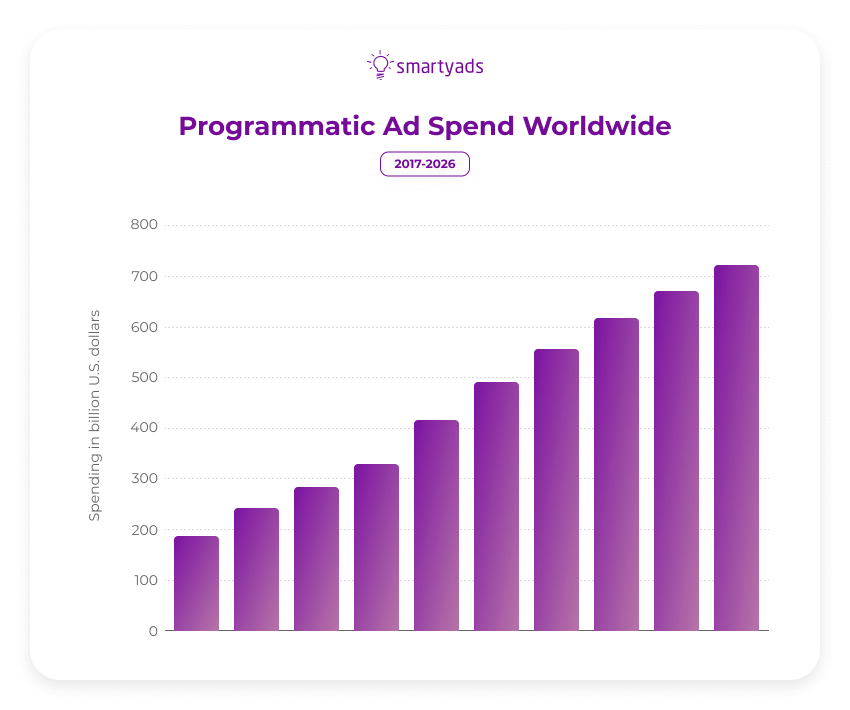
Programmatic ads may come in many forms, including display, video, audio, native, connected TV (CTV) ads, digital out-of-home (DOOH), etc.
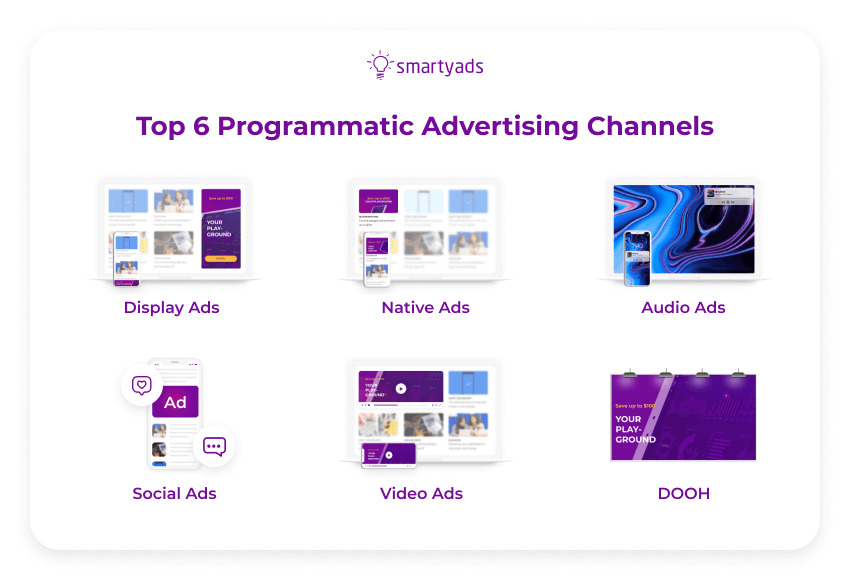
What is programmatic advertising?
Programmatic advertising automates the process of media buying in advertising and selling online ads through a large number of websites, using artificial intelligence and machine learning algorithms. There is even such a thing as AI programmatic advertising.
It provides customers with personally-tailored and relevant experiences based on the data they interact with.
Key benefits of programmatic advertising
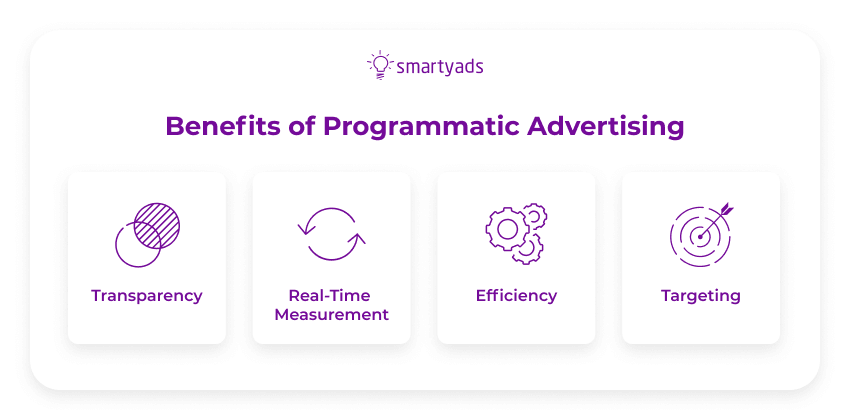
One of greatest advantages of is enabling advertisers to make data-driven decisions, boost ad revenue. Moreover, it is transparent, provides a close look at KPIs, and helps in audience targeting.
Transparency
It provides advertisers with transparency, offering complete visibility over campaigns.
They can see precisely what websites ads are displayed on, what types of audiences view them, and return on investment.
Real-Time Measurement
It gives round-the-clock access to key metrics: CTR, total views, conversions, impressions, and media cost.
You will spend money only on what you know will be effective because results are visible in real time.
Efficiency
Automating the process of buying ad space removes human error and boosts efficiency. Campaign management in marketing can be optimized across machine learning applications, boosting ROI and driving success.
Audience Targeting
Your most valuable audience members will be found for you, so you’ll hit the target audience every time. You can also choose the best devices to advertise on.

Programmatic advertising examples
Now, let’s take a look at some really impactful programmatic ad examples in order to understand – what exactly stands beind their success and what practices those brands applied to campaigns.
John Lewis: 346% ROI Boost with Programmatic Guaranteed Deals
Brand & Objective:
John Lewis, a leading UK department store, wanted to increase revenue during Black Friday by reaching high-value customers while controlling bidding costs.
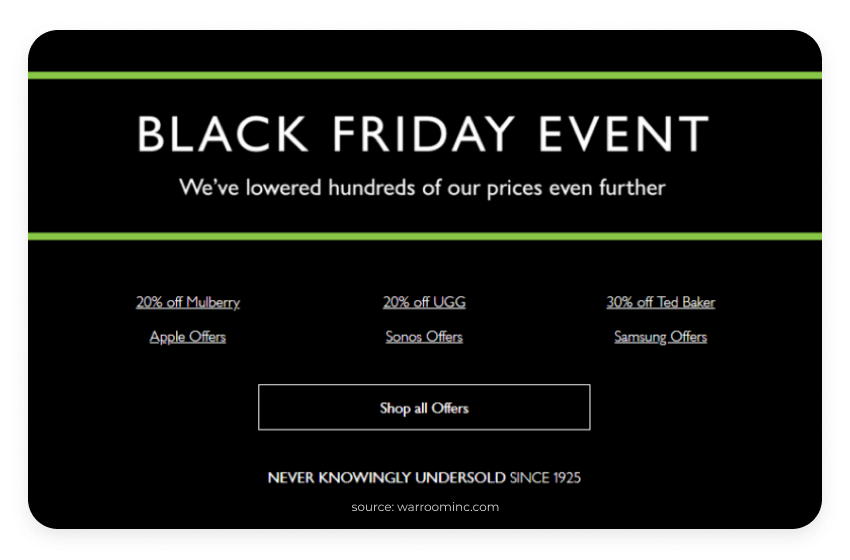
Strategy & Execution:
- Partnered with a DSP to purchase ad inventory during Black Friday.
- Arranged a private marketplace with premium publishers to reduce inflated bidding costs.
- Leveraged “guaranteed deals” to secure priority ad placements at scale.
- Focused targeting on high-value customer segments to maximize relevance.
Results:
- Achieved 346% ROI, exceeding initial goals.
Key Takeaways:
- Innovative strategies can significantly boost ROI on major retail events.
- Private marketplace deals reduce costs while ensuring premium placements.
- Guaranteed deals help secure visibility during peak demand.
Lacoste: 19.7M Impressions and 2,290 Sales via Display Ads
Brand & Objective:
Well, this one also falls within top programmatic ad examples from which one can learn a lot. Lacoste, famous French designer brand with green crocodile logo, wanted increase sales in France, UK, Germany during the summer sale period. They implemented a campaign utilizing display ads, personalized content, +drove sales.
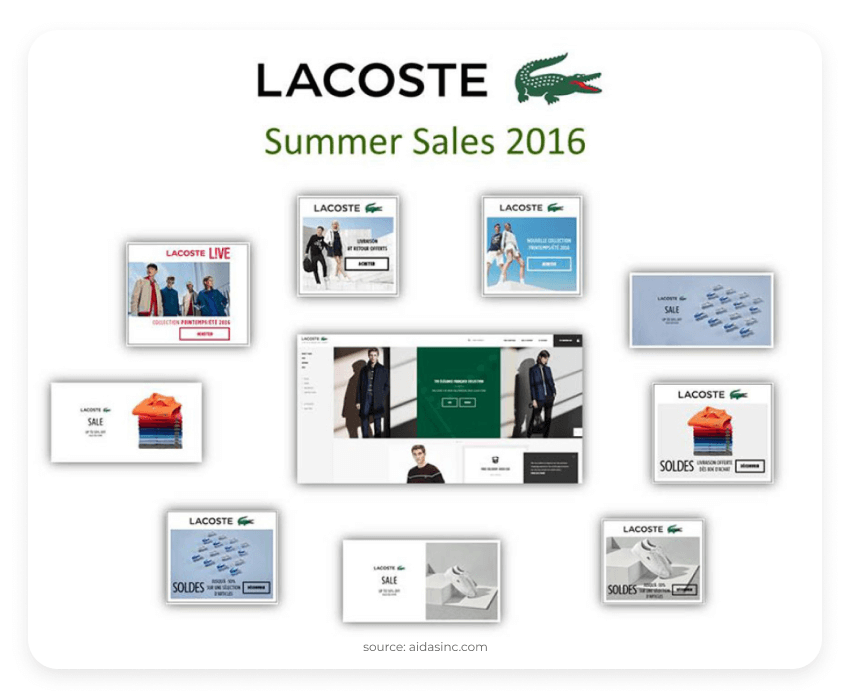
Strategy & Execution:
- Leveraged customer data to build detailed audience profiles.
- Segmented audiences for precise targeting and retargeting.
- Continuously tested creatives, formats, and ad placements.
- Optimized campaigns daily, adjusting spend and messaging in real time.
- Applied A/B testing to refine performance throughout the campaign.
Results:
- 19,749,380 impressions generated.
- 2,290 sales achieved across key markets.
Key Takeaways:
- Data-driven segmentation and targeting are crucial for boosting sales.
- A/B testing and creative optimization drive performance gains.
- Real-time adjustments maximize campaign efficiency and ROI.
Audi: 400% Conversion Lift with Personalized Dynamic Ads
Brand & Objective:
Audi launched its customizable Q2 SUV and aimed to boost conversions by delivering highly personalized, relevant ads to car buyers.
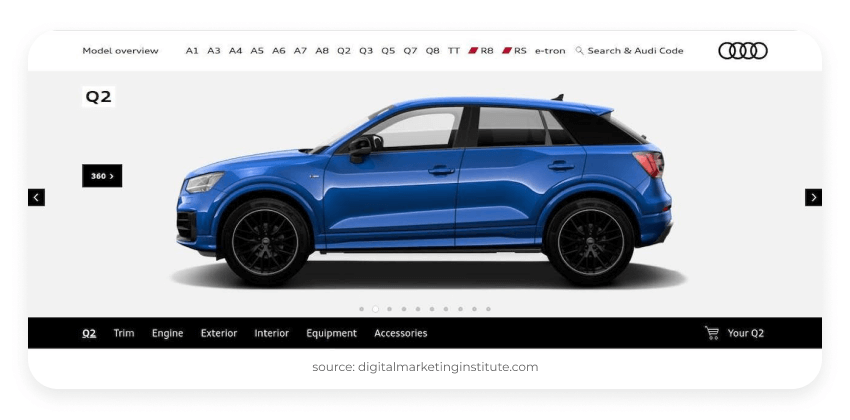
Strategy & Execution:
- Partnered with Google, leveraging Display & Video 360 for audience optimization.
- Used floodlight tags to build retargeting lists and identify in-market car shoppers.
- Integrated a car configurator to capture user style preferences.
- Created dynamic ad creatives tailored to each customer’s profile.
- Aligned ad delivery with each user’s stage in the sales funnel.
Results:
- Achieved a 400% increase in conversion rate compared to traditional buying.
- Dynamic creatives proved 2x more effective than static ones.
Key Takeaways:
- Personalization through data integration significantly lifts conversions.
- Dynamic creatives aligned with user preferences outperform generic ads.
- Combining algorithmic media buying tools with real-time consumer insights drives campaign success.
Unilever’s Axe: 100K Personalized Videos for Audience Engagement
Brand & Objective:
Unilever’s Axe Body Spray sought to engage young consumers in Brazil with a fresh, creative spin on the classic Romeo and Juliet story.
Strategy & Execution:
- Produced 100,000 unique video trailers tailored to individual user preferences.
- Generated 43,000 personalized videos daily, adapting content in real time.
- Delivered highly customized storytelling at scale through algorithmic buying tools.
- Focused on relevance and entertainment to maximize audience engagement.
Results:
- Campaign exceeded expectations, outperforming agency benchmarks by 10–20%.
Key Takeaways:
- Personalized storytelling at scale creates stronger audience connections.
- Real-time customization ensures ads stay relevant and impactful.
- Innovative creative formats help brands cut through digital clutter.
IHG Hotels: Winning Back Direct Bookings with Guaranteed Deals
Brand & Objective:
This is one of the most outstanding programmatic marketing examples for a number of reasons. Intercontinental Hotels Group (IHG) noticed 20% of travelers shifting from direct booking to metasearch sites in search of the lowest price. Their goal was to reclaim direct bookings and re-establish trust with customers.
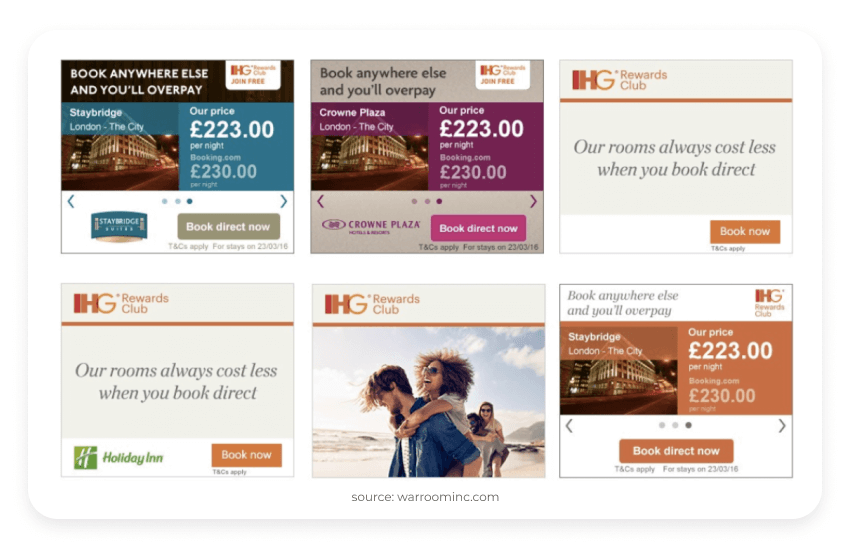
Strategy & Execution:
- Launched a “Book Direct” campaign targeting users actively searching hotel prices.
- Reinforced messaging with a Lowest Price Guarantee, ensuring no cheaper option elsewhere.
- Focused on creative storytelling to dispel myths about booking costs.
- Redirected high-intent traffic away from aggregators back to IHG’s own sites.
Results:
- Successfully redirected significant traffic to IHG platforms.
- Strengthened consumer trust in direct booking value.
Key Takeaways:
- Algorithmic buying can disrupt entrenched industry behaviors.
- Creative campaigns help educate and convert skeptical customer segments.
- A clear value proposition (e.g., price guarantee) restores brand credibility.
The Economist: 10:1 ROI with 3.6M Actions from Display Ads
Brand & Objective:
The Economist wanted to re-engage lost audience segments and drive new subscriptions by delivering content tailored to reader interests. The challenge was twofold: not only to win back previously disengaged readers but also to convert them into paying subscribers. At the same time, the brand aimed to introduce its journalism to fresh audiences who had shown interest in similar content but hadn’t yet explored The Economist.
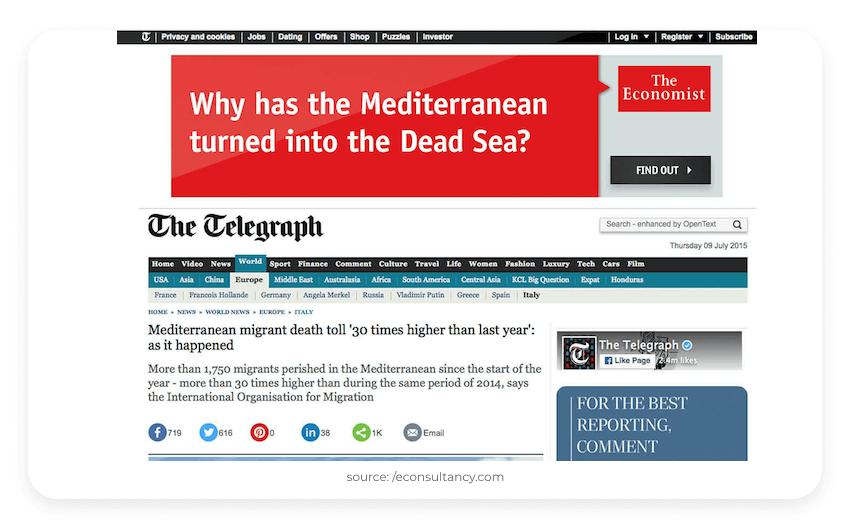
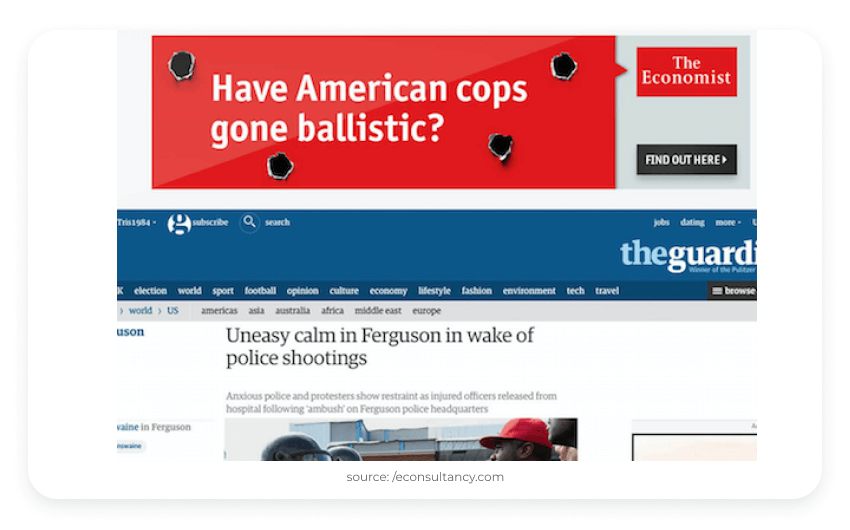
Strategy & Execution:
- Invested £1.2 million into algorithmic buying of digital display ads.
- Targeted 650,000 potential readers with ads placed next to relevant content they already consumed.
- Tailored messaging to resonate with specific audience segments.
- Focused on engaging users on the platforms where they were most active.
Results:
- Reached 650,000 individuals.
- Generated 3.6 million actions from prospects.
- Achieved a 10:1 ROI on campaign spend.
Key Takeaways:
- Tailored ads effectively re-engage lost segments.
- Content alignment boosts relevance and conversion.
- Meeting audiences where they already are increases impact.
Google: 30% Lower CPM and 50% Brand Lift with Optimized campaign
Brand & Objective:
Google aimed to improve campaign efficiency and brand recognition by leveraging data-driven digital marketing strategies. The brand wanted to demonstrate how advanced targeting and automation could reduce costs while simultaneously expanding reach. Another key objective was to strengthen brand perception by ensuring ads were not just seen but remembered.
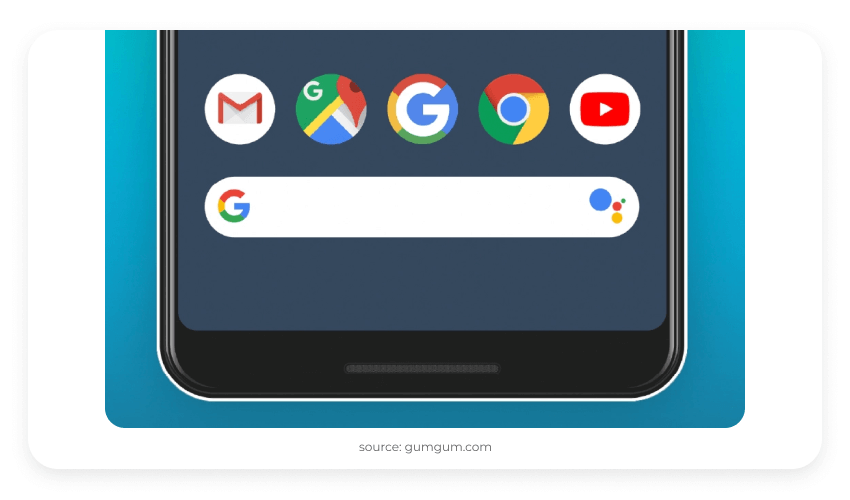
Strategy & Execution:
- Combined first- and third-party data to refine targeting.
- Reached highly relevant audiences through RTB deals.
- Optimized campaigns in real time using performance feedback.
- Recycled data to continually improve audience reach and frequency.
Results:
- Reached 30% more customers, exposed 3x more often.
- Achieved 30% lower CPM.
- Increased brand recognition by 50%.
Key Takeaways:
- Real-time optimization delivers measurable efficiency gains.
- Combining multiple data sources sharpens targeting accuracy.
- Recycling performance data fuels ongoing campaign improvement.
Amanda Foundation: Boosting Pet Adoptions with Personalized Banners
Brand & Objective:
The Amanda Foundation, a non-profit animal rescue, wanted to increase pet adoptions by connecting potential adopters with pets that fit their lifestyles. They aimed to make the adoption process more personal and engaging, ensuring that prospective pet owners felt a real connection before even visiting the shelter. The campaign also sought to raise awareness about the variety of pets available for adoption.
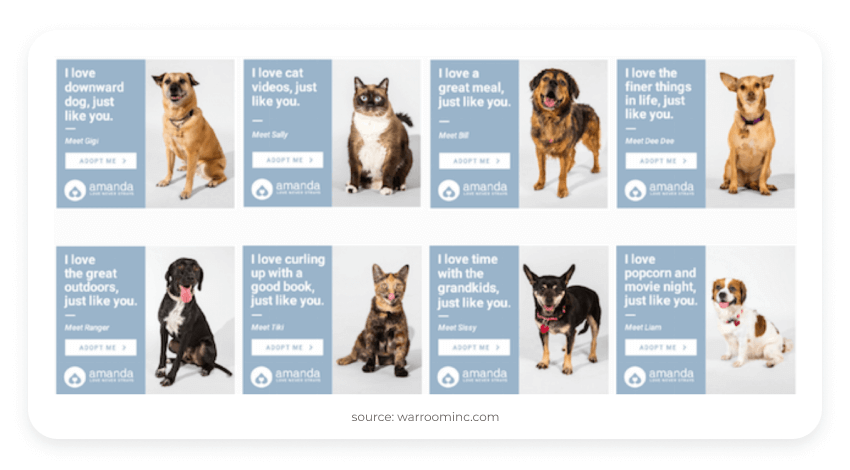
Strategy & Execution:
- Launched the “Digital Pawprint” campaign with personalized display banners.
- Matched real adoptable pets to users’ hobbies and traits.
- Leveraged data-driven targeting to reach the most relevant audiences.
- Delivered dynamic creatives to make ads feel personal and engaging.
Results:
- Significantly increased adoption rates through targeting.
Key Takeaways:
- Algorithmic buying helps reach ideal audience segments efficiently.
- Customized creatives boost engagement and conversions.
- Personalization drives stronger emotional connections in campaigns.
Turner Sports: 17% Ad Recall Lift with NBA Tip-Off Videos
Brand & Objective:
Turner Sports wanted to boost awareness and engagement around the NBA Season Tip-Off through impactful programmatic video advertising. The goal was to capture the excitement of the season launch and ensure fans stayed engaged with the league from day one. They aimed to reach both existing NBA fans and casual viewers who might be enticed to follow the games, increasing overall viewership.
Strategy & Execution:
- Used video ads to support the NBA’s Season Tip-Off.
- Leveraged Google Marketing Platform to identify valuable audience segments.
- Reached 6 million unique viewers with dynamic, real-time video delivery.
- Optimized ad placement for maximum visibility and recall.
Results:
- 17% increase in ad recall.
- 7% lift in brand recognition.
Key Takeaways:
- Video ads drive strong brand awareness for major events.
- Audience segmentation ensures high-value reach and engagement.
- Dynamic, real-time delivery enhances campaign effectiveness.
Auto Trader: 90% CPA Reduction with Smarter DSP Targeting
Brand & Objective:
Auto Trader, a leading digital automotive marketplace, wanted to cut acquisition costs and boost campaign efficiency amid high competition in the car-buying space.
Strategy & Execution:
- Partnered with a new Demand-Side Platform (DSP) to refine audience targeting using machine learning.
- Focused spend on high-intent, high-value users to improve ad efficiency.
- Automated campaign execution, freeing the in-house team to innovate testing strategies.
Results:
- Achieved a 90% reduction in cost-per-acquisition (CPA) within six months.
- Improved ad spend efficiency and lead generation through smarter targeting.
Key Takeaways:
- Employing advanced DSP targeting delivers major cost savings on high-volume campaigns.
- Machine learning enables automation, precision, and frees teams for strategic work.
- In highly competitive markets, efficient audience targeting is game-changing.

Now you’ve seen all major programmatic ads examples and learned the strategies that were used by brands to enhance their ads. It is time to learn some additional approaches that ensure that your programmatic endeavors perform just the way you expect them on programmatic platforms.
How to run effective programmatic campaigns
Several important points must be considered when running your campaigns if you want to achieve the impactful results of the above-mentioned brands.
Stay up to date with the latest programmatic ad changes
It is essential to stay informed about the current developments in this sphere. Why? Because this way you will be able to keep your finger on the pulse of the latest advancements, for example, such as header-bidding (which enables simultaneous bidding on ad inventory), or ML-based advertising algorithms that automatically adjust your bids or creatives. Knowing this, you will be choosing those platforms that elevate your ad endevours and make the routine work easier.
Put customer insight at the wheel
Brands require survey data that reflects real people in order to identify the customer touchpoints that matter and understand the priorities of their target audience. Developing your own audience persona is a must for running effective campaigns because this way you will know how to correctly adjust settings in the targeting section of your demand-side platform. Additionally, if you want to make the targeting super relevant and precise, you need to leverage the full spectrum of audience extension enabled by your DSP. For example, SmartyAds DSP has partnered with LiveRamp and Eyeota to enable advanced targeting opportunities for its advertisers.
Include your first-party data
First-party data is very powerful, especially if you know how to leverage it on your DSP. While gathering this array of data can be hard, as it requires a well thought-through strategy and proper accumulation of this data in your CRM, there’s an opportunity to extend it with the right partners in place. This way, LiveRamp and Eyeota integration in SmartyAds DSP means that advertisers and media-buyers can access advanced segments for targeting and easily integrate their own first-party data to run ads effectively.
Optimize
You can modify your advertising message, placement, and frequency using programmatic advertising. There are many spheres where optimization can come in handy – starting from optimization on a creative level and ending with optimizing your budget or bids. On SmartyAds DSP, you can find optimization at many levels. For example, you can track the interaction with your creative with Pixels and more. Even more interesting, you can apply optimization rules to target only those media sources that prove to provide the results you are striving to achieve.
Measuring the effectiveness of campaign data
Track the effectiveness of your campaign from beginning to end using the combination of analytics and survey data. And if you desire, you can investigate further with custom studies that evaluate your impact on actual individuals. More so, on your demand side platform, measuring the impact of your efforts becomes easy with real-time reports. On SmartyAds DSP, you can measure Wins, Impressions, and other metrics that provide you with insights on how your campaigns perform over time.
Programmatic advertising success stories from SmartyAds
SmartyAds has been working with advertisers, marketers, and independent media buyers for over a decade. We have created a robust full-stack infrastructure with our own solutions, including DSP and DSP. This means that when launching their ad campaigns with us, advertisers receive unparalleled advantage as they connect with a vast pool of supply, including direct publishers.
It is not only convenient but also translates into solid results that we are proud of. On our case study page, we’ve gathered our own examples of how you can use our platform to easily reach such results as:
- +40% Win Rate
- Acquiring 300k+ new users
- Increasing click-through rate by 30%+
- Significant optimization of median cost per click
Optimizing CPM and much more
To discover more about how this worked with our clients, visit the case study page.
Beyond the numbers, our case studies showcase how brands across industries — from e-commerce to mobile apps to local businesses — managed to meet very different campaign goals. Whether it’s acquiring high-value users, driving in-store visits, or scaling app installs globally, SmartyAds DSP adapts to the advertiser’s needs, ensuring that every dollar spent delivers measurable impact.
What truly sets these stories apart is their practical value: they reveal not just what results were achieved, but also how. You’ll see examples of creative targeting combinations, optimization techniques, and budget strategies that can be replicated or tailored to your own campaigns. In other words, our success stories aren’t only proof of performance — they’re also a playbook for your next programmatic win.
Conclusion
Examples of programmatic ads that we’ve reviewed today show inspiring ways brands harness this type of advertising. From targeting individuals to breaking clutter and boosting sales, a data-driven or automated approach definitely drives effectiveness. It plays a crucial role in organizing ad processes today.
Our experts strive to create an efficient, transparent ecosystem, leveraging progressive technologies based on AI and ML optimization, contextual targeting, improved segments for targeting (Liveramp integration), ongoing creative optimization, and much more
If you want the highest ROI, launch impactful campaigns on SmartyAds DSP!
FAQ
Track key metrics like impressions, CTR, conversions, CPA, and ROI in real time. Use A/B testing and creative performance benchmarks from top programmatic ad examples and success stories to fine-tune and hit campaign goals.
Look for a robust DSP offering multi-format delivery, data-driven targeting, and real-time optimization. Platforms like SmartyAds equip you with programmatic marketing examples, helping you drive performance and transparency with minimal effort.
Yes, programmatic solutions aren’t only for global brands. With precise targeting, DSPs, and budget controls, even small campaigns can achieve measurable ROI and reach niche audiences effectively.
SmartyAds delivers full-stack solutions—display, video, CTV, audio, DOOH—plus targeting tools, header bidding, and live analytics. These features turn simple ads into actionable campaigns and showcase programmatic advertising success stories you’ll want to replicate.

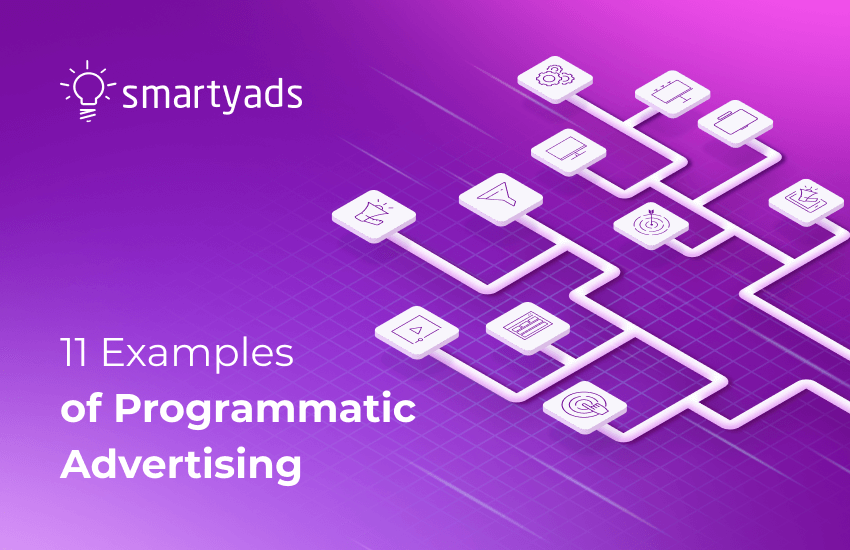
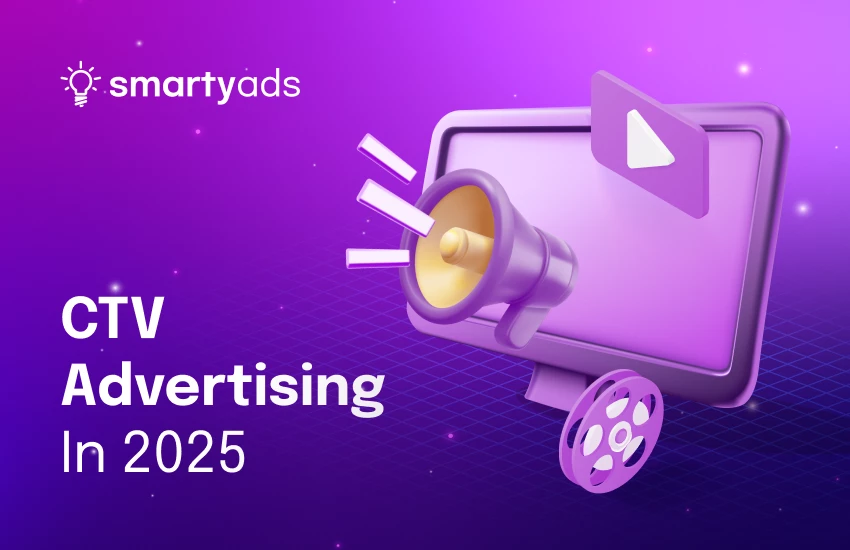

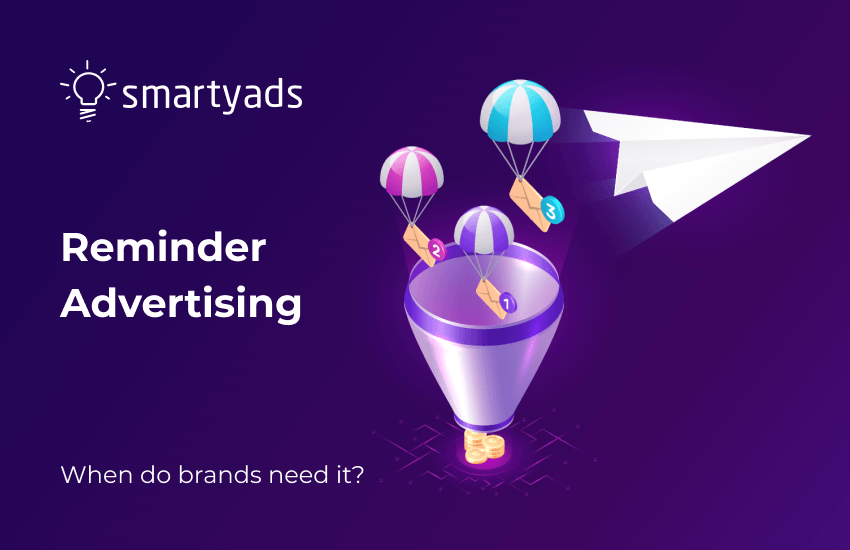
.webp)